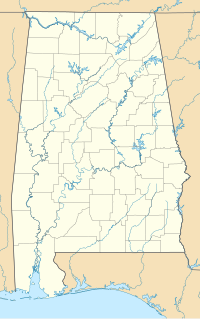
Marengo County is a county located in the west central portion of the U.S. state of Alabama. As of the 2020 census, the population was 19,323. The largest city is Demopolis, and the county seat is Linden. It is named in honor of the Battle of Marengo near Turin, Italy, where French leader Napoleon Bonaparte defeated the Austrians on June 14, 1800.

Wilcox County is a county of the U.S. state of Alabama. As of the 2020 census, the population was 10,600. Its county seat is Camden.

Grove Hill is a town in Clarke County, Alabama, United States. At the 2020 census, the population was 1,818. It is the county seat of Clarke County and home of the Clarke County Museum.

Brewton is a city in and the county seat of Escambia County, Alabama, United States. As of the 2020 census, the population was 5,276. Brewton is located in south central Alabama, just north of the Florida Panhandle.

Courtland is a town in Lawrence County, Alabama, United States, and is included in the Decatur Metropolitan Area, as well as the Huntsville-Decatur Combined Statistical Area. The population was 609 at the 2010 census, down from 769 in 2000.

Lowndesboro is a town in Lowndes County, Alabama, United States. At the 2010 census the population was 115, down from 140 in 2000. It is part of the Montgomery Metropolitan Statistical Area. Although initially incorporated in 1856 by an act of the state legislature, it lapsed and was not reincorporated until 1962.
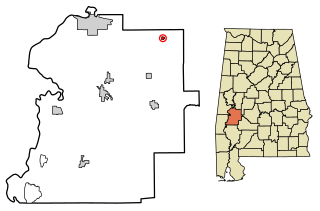
Faunsdale is a town in Marengo County, Alabama, United States. At the 2020 census the population was 90, down from 98 in 2010. Faunsdale is home to a community of Holdeman Mennonites, the only such community outside of Greensboro, Alabama. The town has the only Holdeman Mennonite Church in the area, Cedarcrest Mennonite Church.

Moncks Corner is a town in and the county seat of Berkeley County, South Carolina, United States. The population was 7,885 at the 2010 census. As defined by the U.S. Census Bureau, Moncks Corner is included within the Charleston-North Charleston, SC Metropolitan Statistical Area.
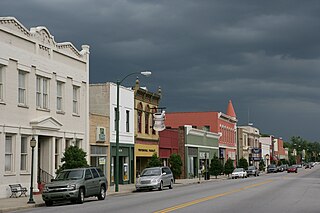
Marion is a city in and the county seat of Marion County, South Carolina, United States. It is named for Francis Marion, a brigadier general from South Carolina in the American Revolutionary War. The population was 6,939 at the 2010 census.

Whatley is a census-designated place in Clarke County, Alabama, United States. As of the 2010 census, its population was 225. It is named in honor of Franklin Benjamin Whatley. It has one site on the National Register of Historic Places, the Whatley Historic District.
Prairieville is an unincorporated community in Hale County, Alabama, United States.

Carlton is an census-designated place in Clarke County, Alabama, United States. As of the 2020 census, its population was 46. It was formerly known as Hal's Lake. The Isaac Nettles Gravestones are located in Carlton in the Mount Nebo Baptist Church Cemetery. They are listed on the National Register of Historic Places. There was one convenience store in Carlton until 2009.

Gainestown is an unincorporated community on the Alabama River in Clarke County, Alabama, United States. It was named for George Strother Gaines, who was the senior United States Indian agent in the region; he established a trading post here in 1809 for business with the Choctaw, the predominant tribe.
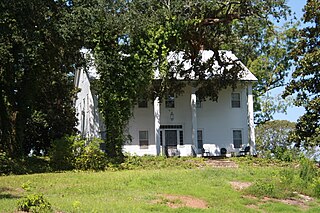
Furman, also known as Old Snow Hill, is an unincorporated community in Wilcox County, Alabama, United States. The Furman Historic District is included on the National Register of Historic Places.
Richmond, also known as Warrenton, is an unincorporated community in Dallas County, Alabama, United States. Richmond gained its name from Richmond County, New York, the birthplace for several early settlers, most notably the Crocherons. Richmond has one site included on the National Register of Historic Places, the Street Manual Training School. Elm Bluff Plantation, owned by John Jay Crocheron, is nearby in Elm Bluff.
Wheeler is an unincorporated community in Lawrence County, Alabama, United States. Wheeler had a post office at one time, but it no longer exists. Wheeler has two sites on the National Register of Historic Places, the Tidewater-type cottage known as Bride's Hill and the former home of Joseph Wheeler, Pond Spring.
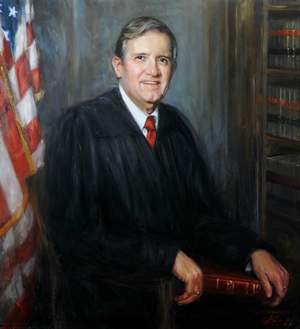
John Cooper Godbold was a United States circuit judge of the United States Court of Appeals for the Eleventh Circuit and the United States Court of Appeals for the Fifth Circuit.
Brierfield is an unincorporated community in Bibb County, Alabama, United States. It was established in the mid 19th century and was the site of a major ironworks operation during and following the American Civil War. It is thought by scholars to be named in honor of Jefferson Davis' Brierfield Plantation, which supplied the first ironworks with machinery. It has two sites listed on the National Register of Historic Places, the Brierfield Furnace and Montebrier.
Canton Bend, once known simply as Canton, is an unincorporated community in Wilcox County, Alabama, United States. Located on the south bank of the Alabama River, it served as the first county seat for Wilcox County from 1819 until its move to Camden in 1833. It has several historic sites, including Youpon Plantation and the Tristram Bethea House.
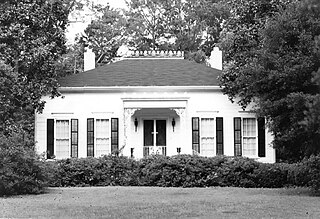
The Woodlane Plantation is a historic plantation with a mansion in Eufaula, Alabama, U.S.. It was established as a cotton and tobacco plantation in the 1850s for John W. Raines. The mansion was designed in the Greek Revival architectural style, and its construction was completed in 1852. By the 1880s, it was the home of Reuben Kolb. It has been listed on the National Register of Historic Places since March 29, 2006.
